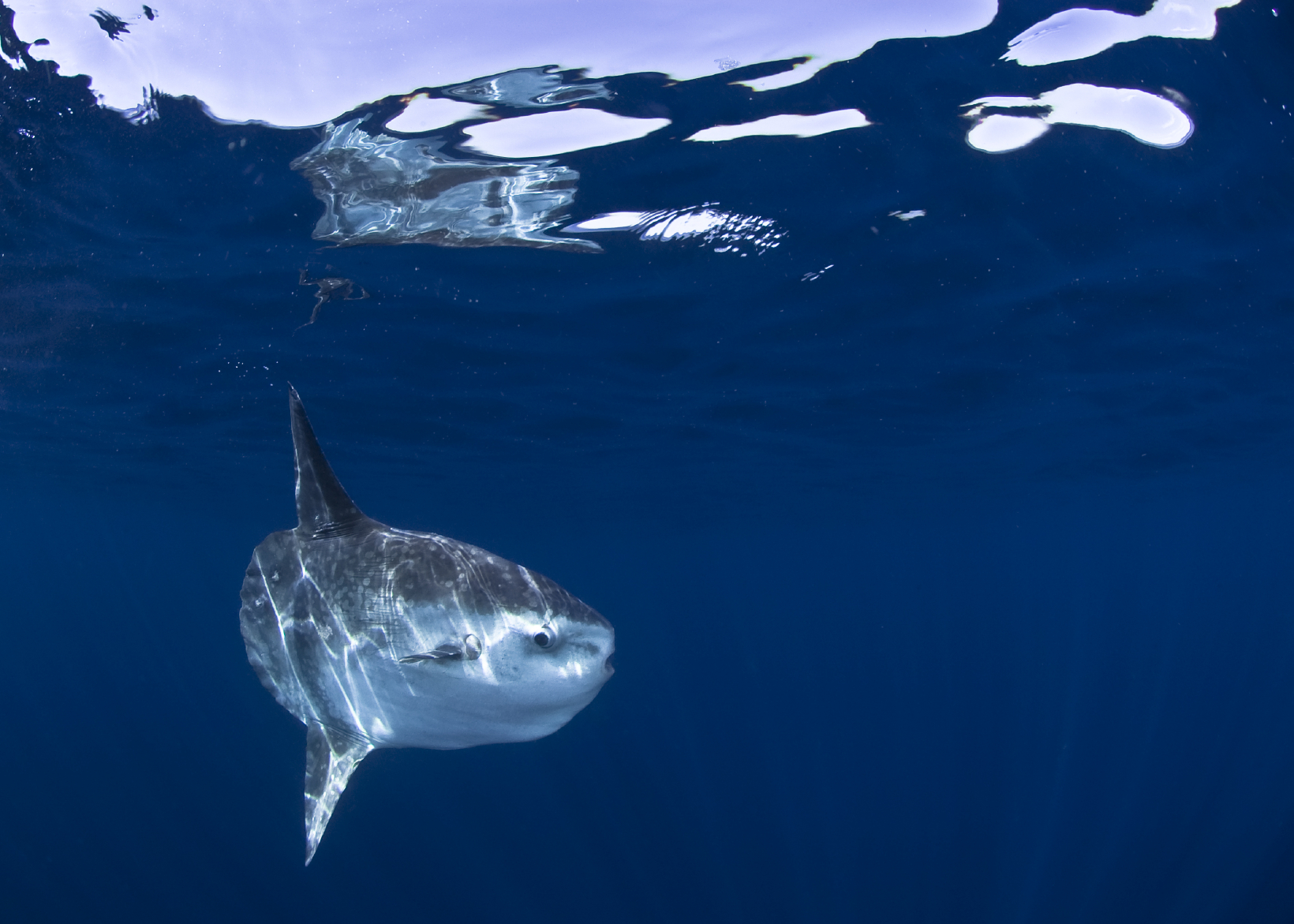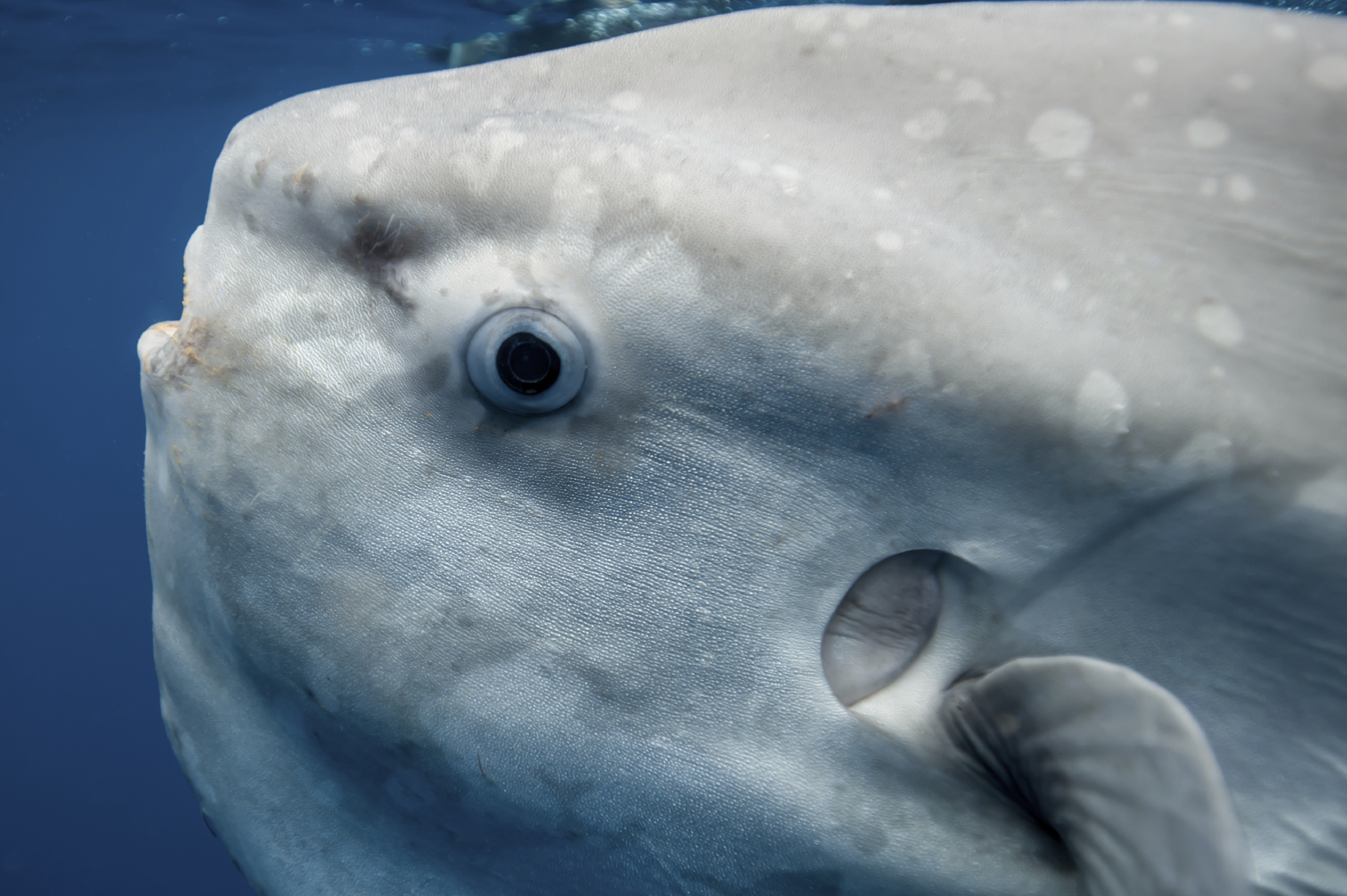Guest post by Christina Albright-Mundy
The first time I saw an adult mola mola, I was caught off guard. I was working on the underwater navigation portion of my advanced certification at Hopkins Deep in Monterey, California. I was looking at my compass when, about 30 feet in front of me, I saw what looked like a floating oval rock — a rock with fins. I had no idea what I was looking at. When I described the fish to my instructor after surfacing, he told me nonchalantly that it was a mola mola. I wondered how I’d never known of this unique cold-water fish before this dive, and my curiosity was piqued.

Mola molas are the largest of the teleostei, or bony, fishes. They can grow to be over 10 feet long and 14 feet tall, and weigh almost 5,000 pounds. A Mola mola on display at the Monterey Bay Aquarium gained 800 pounds in 14 months and required a helicopter to transport him back into the bay.
Molas, commonly referred to as sunfish, are often found basking on the surface of the water. They are prone to parasites, and frequent the surface and shallow waters to allow birds and other fish to remove these parasites. So desperate are the molas to shed their parasites, they have been known to leap out of the water in an effort to dislodge the unwelcome guests upon reentry. Molas have also been known to search for food by making deep pelagic dives, which are colder than the fish can tolerate. The mola will eventually lose consciousness and then float to the surface, where it will be rewarmed by the sun and regain consciousness.
With a diet consisting of mostly gelatinous animals, such as jellyfish, sea nettles and Portuguese man-of-war, Mola molas are not impeded by their small mouth or lack of teeth. Inside the mola’s mouth are two pairs of hard teeth plates, which they use to suck the jellies into their mouths and reduce them to manageable bits. And because of a thick mucus coating in the digestive tract, molas are impervious to the sting of their favorite meal.

The same weekend I saw the adult mola in Monterey, I also saw a young mola, less than a foot long. He was tucked between some rocks and shied away from me as I approached; the juvenile molas often fall prey to sea lions, both as a meal and what as what seems to be entertainment. Sea lions, having captured a young mola, will often bring it to the surface and begin tossing it around, ripping its fins off. While there is a practical reason for removing the fins of the fish, it often appears that the sea lions are playing rather than feeding. Gulls, sensing a potentially free meal, try to get in on the action as well. Should the sea lions abandon their meal and no gull is able to reclaim the fish, the now finless and immobile mola will sink to the bottom of the ocean, where it will become a meal for bottom-dwelling organisms.
While adult mola molas have few predators thanks to their size and their thick skin, they are not impervious. Only orcas will attack a large adult mola, but their greatest enemy is humans. Molas are the most common by-catch of the drift net fishery off California and Oregon, which targets swordfish, and account for 40 percent of all discards.
Another hazard for molas is shared by sea turtles, another jellyfish-loving animal: plastic bags. Floating in the water, plastic bags look like jellyfish and can be consumed by an unsuspecting mola. Intestinal compactions can result, leading to death.
Mola molas are not currently threatened; however, like all creatures in the ocean, they suffer from the impacts of human carelessness. The best way for the average person to positively impact the mola mola population — and countless other marine life — is to stop using plastic bags. Reusable bags are easy to find, and making that small effort can help ensure that future generations of dive trainees can also come face to face with a sunfish.

